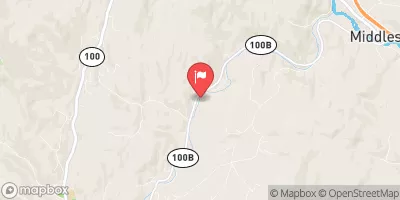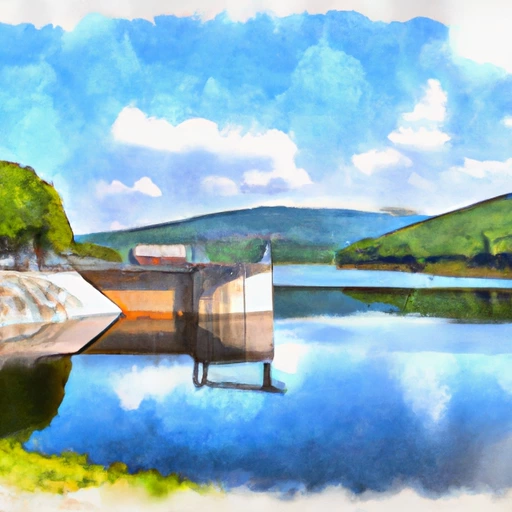Waterbury Reservoir Near Waterbury Reservoir Report
Nearby: Bolton Falls Brisco
Last Updated: January 2, 2026
Waterbury Reservoir is a man-made body of water located in Waterbury, Vermont.
°F
°F
mph
Wind
%
Humidity
Summary
It was created in 1938 by the Civilian Conservation Corps as a means of flood control and water supply for the city of Burlington. The reservoir has a surface area of 850 acres and is fed by several small streams, including Little River and Waterbury River. It also receives water from snowmelt and precipitation. It is a popular destination for outdoor recreation, including swimming, boating, fishing, and camping. The reservoir serves as a source of drinking water for several nearby towns, including Waterbury, Stowe, and Morrisville. The reservoir is also used for agricultural purposes, including irrigation and livestock watering. The area surrounding the reservoir is designated as a state park and is managed by the Vermont Department of Forests, Parks, and Recreation.
Reservoir Details
| 24hr Change | None% |
| Percent of Normal | None% |
| Minimum |
0.1
2020-02-03 |
| Maximum |
34.4
2021-08-09 |
| Average | |
| Dam_Height | 187 |
| Hydraulic_Height | 183 |
| Drainage_Area | 109 |
| Year_Completed | 1938 |
| Nid_Storage | 88000 |
| River_Or_Stream | LITTLE RIVER |
| Structural_Height | 187 |
| Foundations | Rock, Soil |
| Surface_Area | 850 |
| Dam_Length | 2130 |
| Hazard_Potential | High |
| Primary_Dam_Type | Earth |
| Nid_Height | 187 |
Seasonal Comparison
Temperature, Air, °C Levels
Weather Forecast
Nearby Streamflow Levels
Dam Data Reference
Condition Assessment
SatisfactoryNo existing or potential dam safety deficiencies are recognized. Acceptable performance is expected under all loading conditions (static, hydrologic, seismic) in accordance with the minimum applicable state or federal regulatory criteria or tolerable risk guidelines.
Fair
No existing dam safety deficiencies are recognized for normal operating conditions. Rare or extreme hydrologic and/or seismic events may result in a dam safety deficiency. Risk may be in the range to take further action. Note: Rare or extreme event is defined by the regulatory agency based on their minimum
Poor A dam safety deficiency is recognized for normal operating conditions which may realistically occur. Remedial action is necessary. POOR may also be used when uncertainties exist as to critical analysis parameters which identify a potential dam safety deficiency. Investigations and studies are necessary.
Unsatisfactory
A dam safety deficiency is recognized that requires immediate or emergency remedial action for problem resolution.
Not Rated
The dam has not been inspected, is not under state or federal jurisdiction, or has been inspected but, for whatever reason, has not been rated.
Not Available
Dams for which the condition assessment is restricted to approved government users.
Hazard Potential Classification
HighDams assigned the high hazard potential classification are those where failure or mis-operation will probably cause loss of human life.
Significant
Dams assigned the significant hazard potential classification are those dams where failure or mis-operation results in no probable loss of human life but can cause economic loss, environment damage, disruption of lifeline facilities, or impact other concerns. Significant hazard potential classification dams are often located in predominantly rural or agricultural areas but could be in areas with population and significant infrastructure.
Low
Dams assigned the low hazard potential classification are those where failure or mis-operation results in no probable loss of human life and low economic and/or environmental losses. Losses are principally limited to the owner's property.
Undetermined
Dams for which a downstream hazard potential has not been designated or is not provided.
Not Available
Dams for which the downstream hazard potential is restricted to approved government users.
Area Campgrounds
| Location | Reservations | Toilets |
|---|---|---|
 Little River State Park
Little River State Park
|
||
 A Area
A Area
|
||
 B Area
B Area
|
||
 Primitive Campsite #22
Primitive Campsite #22
|
||
 Primitive Campsite #21
Primitive Campsite #21
|
||
 Hump Brook Campsite
Hump Brook Campsite
|







 Waterbury
Waterbury
 Waterbury Reservoir Near Waterbury
Waterbury Reservoir Near Waterbury
 Wrightsville Detention Reservoir @ Wrightsville Vt
Wrightsville Detention Reservoir @ Wrightsville Vt
 Little River Road 417, Waterbury
Little River Road 417, Waterbury